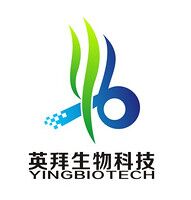MYC靶標(biāo)基因PCR芯片 MYC Targets PCR Array

MYC靶標(biāo)基因PCR芯片 MYC Targets PCR Array
MYC靶標(biāo)基因PCR芯片 MYC Targets PCR Array
運(yùn)費(fèi) ¥0.00
| 地區(qū): | 上海 |
| 簡(jiǎn)介: | MYC Targets PCR Array |
| 提供商: | SAB |
| 服務(wù)名稱(chēng): | MYC Targets PCR Array |
MYC & Co-Transcription Factors: E2F1, MAX, MAZ, MYCL, MYCN, PIAS2. Up-Regulated by MYC: AIMP2, APEX1, ATF4, BAX, BCAT1, CAD, CBX3, CCNB1, CCND2, CCT5, CDC25A, CDK4, CHEK1, CKS2, YBX3, CSTB, CTSC, DDX10, DKC1, E2F1, EIF4A1, EIF4B, EIF4E, ENO1, EXOSC8, FASN, GNL3, HK2, HNRNPA1, HNRNPA2B1, LTA4H, MAT2A, MGST1, MSH2, MTHFD1, NAP1L1, NBN, NCL, NME1, NOLC1, NPM1, ODC1, PA2G4, PAICS, PCNA, PHB, POLD2, PPAT, PSMG1, PTEN, PYCR1, RPL13, RPL19, RPL23, RPL27A, RPL5, RPS5, SHMT1, SNRPB, SRM, SRSF1, TERT, TOP1, TP53, TPI1, TYMS, UBE2C. Down-Regulated by MYC: CDKN1B, CDKN2B, CSDE1, ID3, ILK, ITGB1, MYC, PPP2R4, ZFP36L1. Apoptosis: BAX, CCNB1, GNL3, NPM1, TP53. Cell Cycle: CCNB1, CCND2, CDC25A, CDK4, CDKN1B, CDKN2B, GNL3, PA2G4, PCNA, TP53. Cell Growth & Proliferation: CDKN1B, CKS2, NPM1, PA2G4, PCNA, PHB. Chromatin Modifying & Associated Proteins: CBX3, NAP1L1. DNA Repair: AIMP2, APEX1, CHEK1, MSH2, NBN, NPM1, PCNA, TERT, TP53. DNA Replication: PCNA, POLD2, TOP1. Extracellular Matrix & Cell Adhesion Molecules: ILK, ITGB1. Metabolism: BCAT1, CAD, ENO1, FASN, GCLC, HK2, LTA4H, MAT2A, MGST1, MTHFD1, NME1, ODC1, PAICS, PDK1, PPAT, PYCR1, SHMT1, SRM, TPI1, TYMS. Protein Synthesis, Degradation & Turnover: CCT5, CSTB, CTSC, EIF4A1, EIF4B, EIF4E, NCL, NPM1, PSMG1, PYCR1, RPL13, RPL19, RPL23, RPL27A, RPL5, RPS5, UBE2C. RNA Processing & Binding Factors: CSDE1, DDX10, DDX39B, DKC1, EXOSC8, HNRNPA1, HNRNPA2B1, NOLC1, SNRPB, SRSF1. Signal Transduction: ILK, NPM1, PDK1, PPP2R4, PTEN. Transcription Factors & Cofactors: ATF4, YBX3, ID3, MYC, TP53, ZFP36L1. Tumor Suppressor Genes: MSH2, PHB, TP53. |








